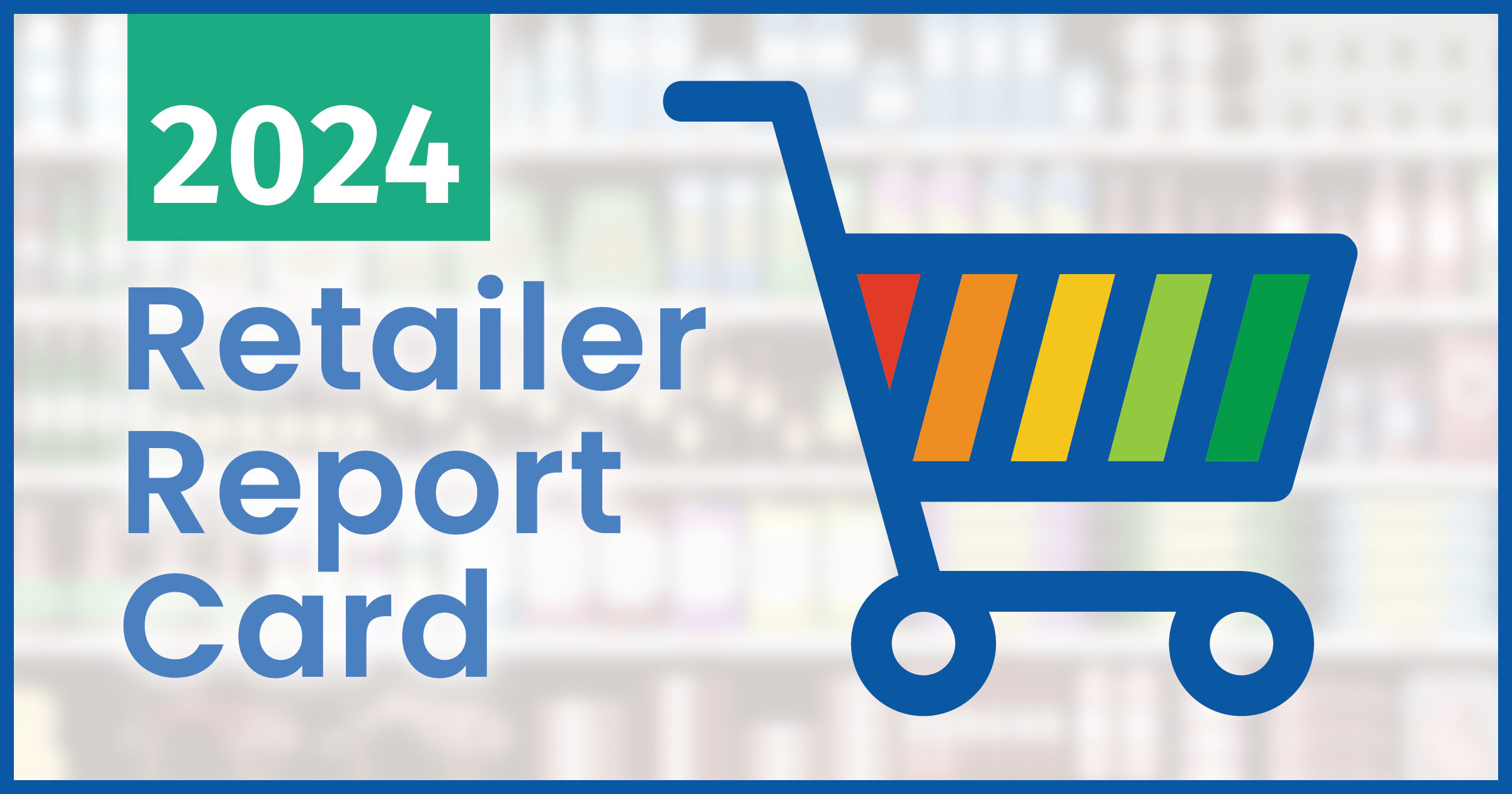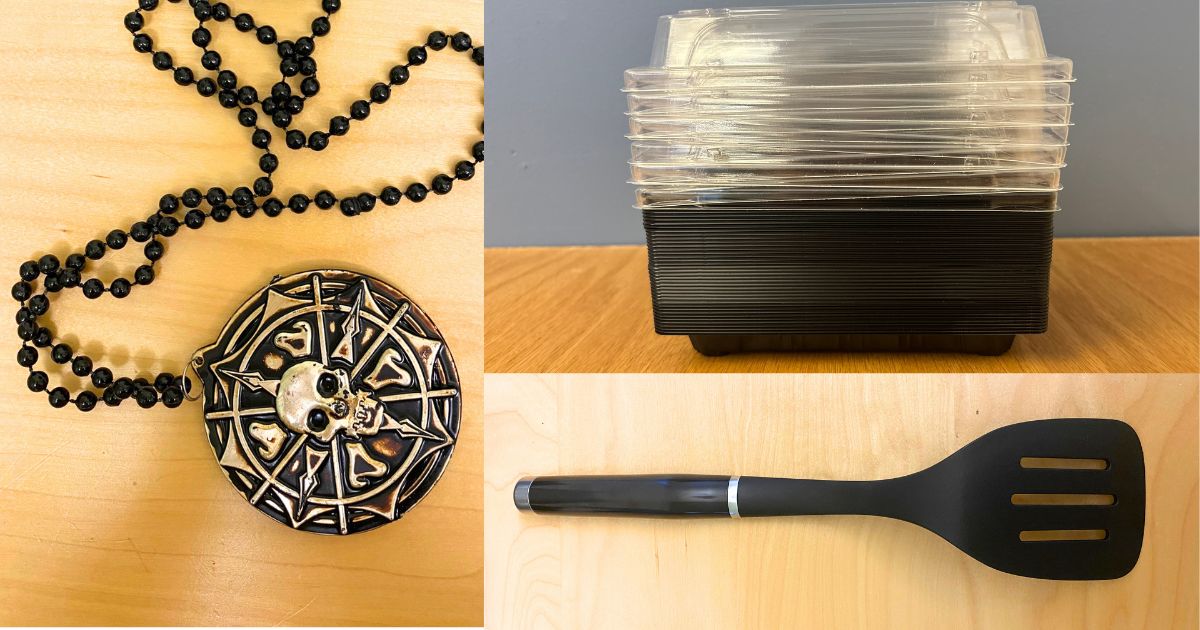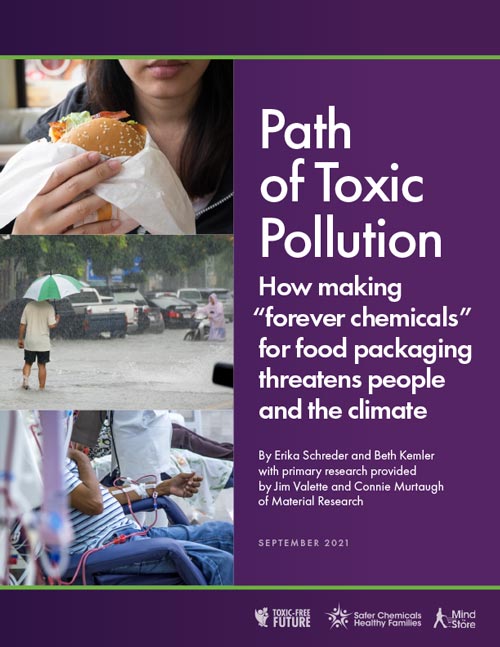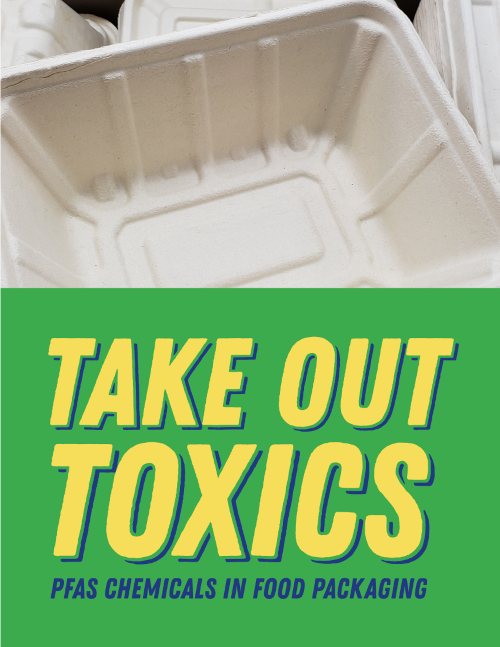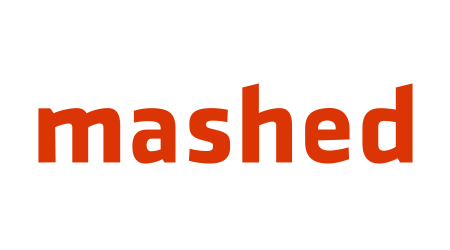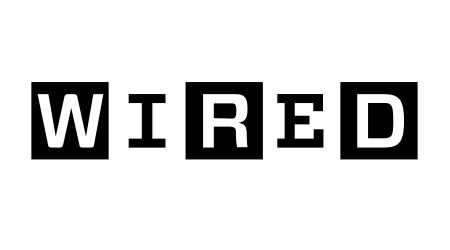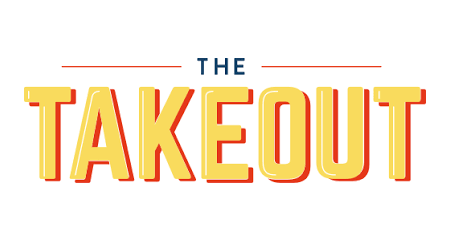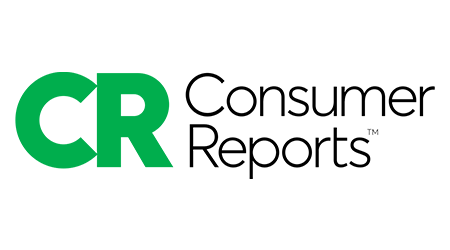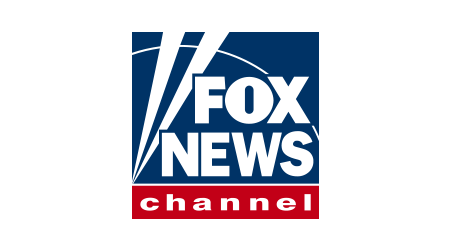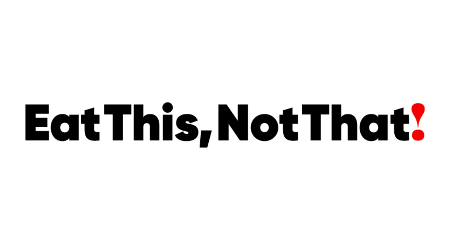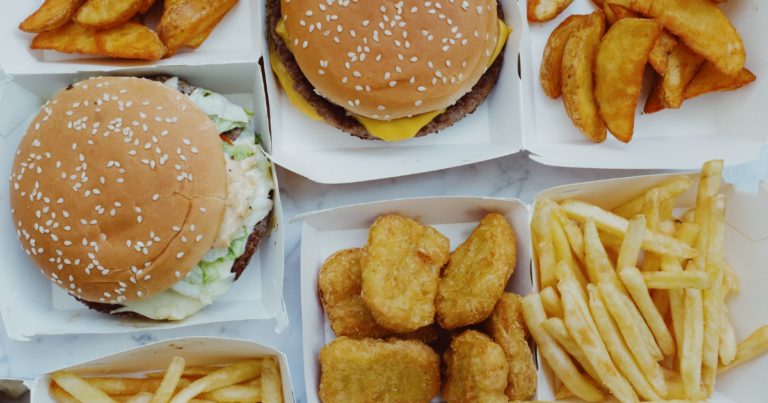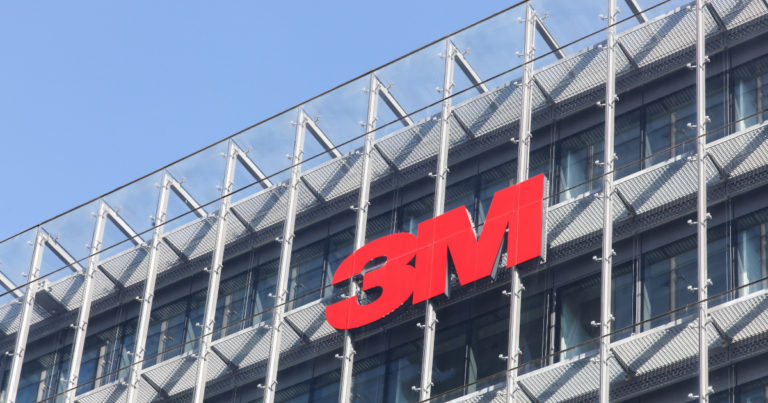Toxic Chemicals in Food Packaging: PFAS, Phthalates, and Other Hidden Hazards in Wrappers and Containers
Food packaging made from certain plastics and other synthetic materials is contaminating what we eat. Harmful chemicals like PFAS, phthalates, and bisphenols can leach from packaging into our food—polluting our bodies with hormone disruptors and other toxic substances linked to serious health problems, from cancer and infertility to obesity and developmental delays.
These chemicals are building up in our food, our bodies, and are polluting the planet. And now research shows that microplastics—along with the toxic contaminants they carry—are making their way into our brains, testes, and even breast milk.
For years, powerful chemical industry interests have blocked stronger regulations—preventing meaningful protections and allowing harmful, outdated chemicals to remain in widespread use. The result? Ongoing risks to our health.
We’re fighting to change that.
At Toxic-Free Future, we’re advancing real solutions to eliminate harmful chemicals from food packaging—because no one should have to choose between convenience and contamination. We conduct groundbreaking research, win strong state laws, and secure bold commitments from major retailers to clean up their packaging. From takeout containers to canned food, we’re working to make sure what holds your food doesn’t harm your health.
PFAS “Forever Chemicals” in Food Packaging
Food packaging was one of the largest uses of PFAS—a dangerous class of “forever chemicals.” known for their persistence, toxicity, and contamination of drinking water, people, and wildlife. PFAS (per- and polyfluoroalkyl substances) have been used for decades to make packaging water-repellent and grease-proof.
Eliminating PFAS in food packaging has been a top priority for Toxic-Free Future.
Toxic-Free Future’s original scientific studies and policy wins have driven down the use of PFAS in food packaging. We’ve:
- Passed the first-in-nation law banning these chemicals in food packaging, setting a precedent for the nation and world.
- Tested products and launched national campaigns focused on the largest grocery and fast food chains.
- Uncovered the climate impacts of PFAS production and disposal.
- Published new research revealing these chemicals are in breast milk.
- Developed policy recommendations for retailers.
With no federal regulations to prevent PFAS from being used in food packaging, Toxic-Free Future’s work is critical in protecting people and the environment from these toxic threats. By combining our science and research and strategic advocacy (in Washington, DC, Washington state, other states, and corporate boardrooms), we’ve helped secure bans on PFAS in food packaging and won bold commitments from major food retailers to phase out these chemicals on a global scale.
The Toxic Lifecycle of PFAS
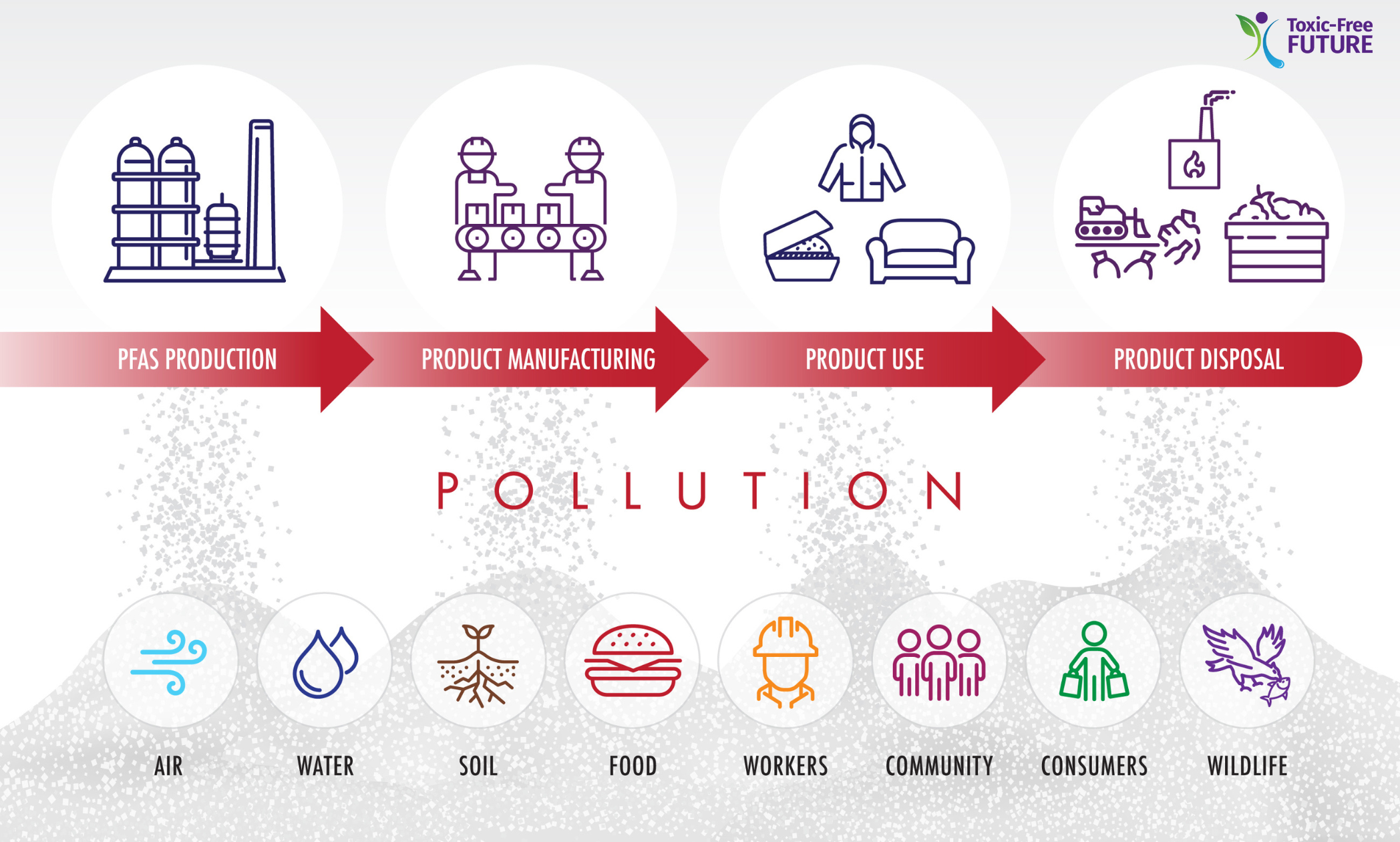
Beyond PFAS: The Other Toxics in Your Food
PFAS is just the tip of the toxic iceberg.
It’s one of the most well-known harmful classes of chemicals in food packaging—but it’s far from the only one. Our food is being wrapped, processed, and stored in packaging made with toxic plastics and chemicals that don’t belong anywhere near what we eat.
Here are just a few of the hidden dangerous chemicals showing up in our food:
- Phthalates – These endocrine-disrupting chemicals are used to make vinyl plastic softer. They’re found in food processing equipment and other food contact materials, and can easily get into food long before it reaches our plates.
- Bisphenols – Chemicals like bisphenol A (BPA), often used in the lining of canned foods, can leach into soups, beans, and vegetables. They’ve been linked to hormone disruption and other serious health concerns.
- PVDC plastic – This chlorinated plastic is commonly used to wrap meats and cheeses in grocery store delis. It can leach plasticizer chemicals into your food.
- Styrene-based plastics – Found in foam takeout containers and trays, these plastics can pose health risks and are a big part of the plastic pollution problem.
And those are just a few. Hundreds of other concerning chemicals are still allowed in food packaging—and most of us have no idea they’re there. We’re working to change that.
Our Impact
As a result of our policy wins and retail campaigns, millions of pounds of PFAS are being removed from food packaging every year—protecting people, communities, and the environment from toxic exposure.
- Washington led the way as the first state in the nation to ban PFAS in food packaging through its Healthy Food Packaging Act in 2018.
- Eleven additional states adopted bans including California, Colorado, Connecticut, Hawaii, Maryland, Maine, Minnesota, New York, Oregon, Rhode Island, and Vermont.
- More than two dozen major retailers selling food or food packaging have committed to reduce or eliminate PFAS in food packaging at their more than 140,000 stores in 100+ countries worldwide. These retailers include Ahold Delhaize, Burger King, McDonald’s, Starbucks, Taco Bell, Wendy’s, and Whole Foods, among others. Learn more
- Major U.S. manufacturers voluntarily ended U.S. sales of certain PFAS for use in food contact applications in response to state and market policy actions.
- Toxic-Free Future secured commitments from major grocery store chains including Kroger, Albertsons, and Ahold Delhaize to restrict BPA in their private-label canned foods.
- Washington state enacted a first-in-nation ban on bisphenols in drink can liners.
CHEMICALS AND PLASTICS IN FOOD PACKAGING
Our Priorities
Safer Products for Washington
The Safer Products for Washington Act is the strongest law in the U.S. regulating toxic chemicals in products and packaging. Passed in 2019, the Washington state law protects people and the environment from harmful chemicals. Toxic-Free Future led the fight to win this precedent-setting legislation and continues to work with partners to ensure the strongest protections are put in place. Through this program, Washington has already enacted first-in-the-nation bans on PFAS, phthalates, and flame retardants—setting a model for the nation.

Mind the Store: driving safer food packaging and beyond
Through our Mind the Store program, we hold major retailers—from McDonald’s to Trader Joe’s—accountable for removing toxic chemicals and plastics from products and packaging. Using cutting-edge research, direct engagement, and advocacy, we help drive corporate action. Toxic-Free Future’s Retailer Report Card calls out laggards and highlights leaders, pushing the industry toward safer, healthier solutions—and it’s working.
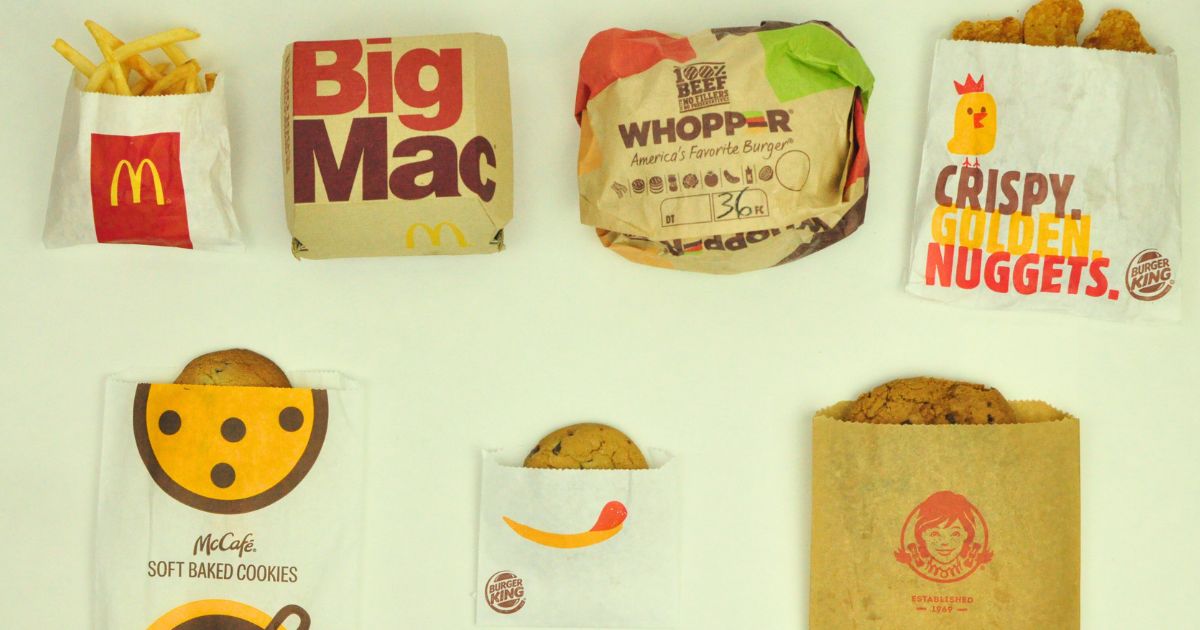
Science that exposes the problem and powers solutions
Our Science program uncovers what the industry doesn’t want you to see: toxic chemicals hiding in everyday food packaging. From detecting PFAS in fast-food wrappers to exposing flame retardants in recycled plastic utensils, our research reveals how harmful chemicals are getting into our food and homes. And our work goes far beyond packaging. We investigate toxic threats across a wide range of sectors—from textiles to electronics—ensuring the science is there to back bold policy and corporate action. Our findings don’t just expose problems—they drive smarter laws and retailer reforms that protect people and the planet.

Take action: Tell retailers to clean up their act
Your voice matters—and retailers are listening. Grocery stores and fast-food chains care what their customers think. Together, we can push them to eliminate toxic chemicals and plastics from the packaging that touches our food.
Our Retailer Report Card exposes the worst offenders in our Toxic Hall of Shame—companies that are still using dangerous packaging. Let’s make sure they hear us loud and clear: Toxics don’t belong in food packaging. Period.
Take action now to demand safer, healthier packaging from the brands you know and trust.

Polluted Polly
A passionate and persistent activist, Polluted Polly has joined us to help get unnecessary toxic chemicals banned in food packaging materials nationwide. It is Polly’s mission to protect people, communities, and the environment from toxic PFAS chemicals that can leach out of packaging and last forever, polluting our drinking water, food, air, and soil.
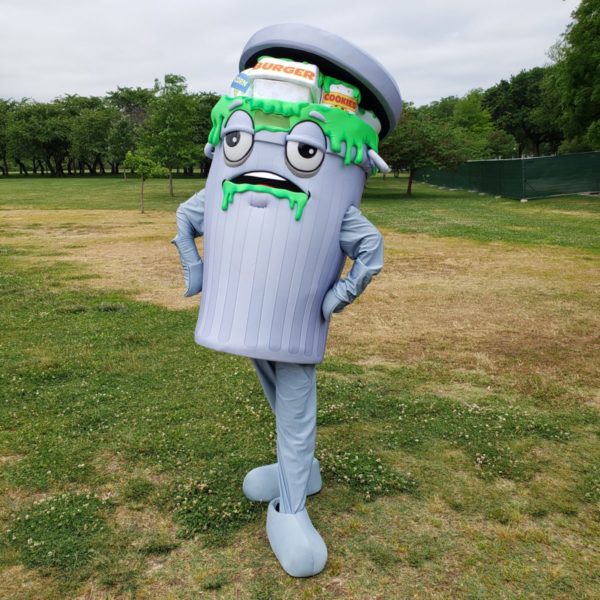
Our Media Coverage
Latest News on Toxic Chemicals in Food Packaging




